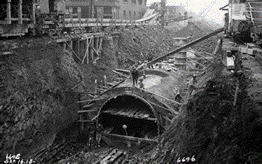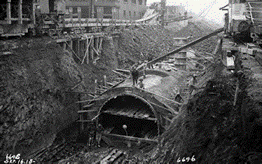The Evolution of the Networked House
This is a story that has nothing to do with the internet. It has to do with health, safety, and quality of life. And, if you’re like me, you’ve enjoyed the benefits of a networked house for a long time.
“Back in the Day”
You used candles and kerosene lanterns for light at night. If you got careless a fire ensued and maybe, just maybe, you burned down the house.
You used a privy or outhouse for your toilet needs. Or maybe you lived in a tenement with a water closet for twenty people. Nice, but it emptied into a cesspool in the “back yard.” Not too sanitary.
You only occasionally bathed because you had to haul water from the well and then heat it on a wood-burning stove. Good thing that everyone smelled as bad.
You had coal delivered so that you could heat the house in the winter. Oh, dad had to stoke the furnace in the morning before he went to work.
If someone got sick you had to “run into town” to fetch the doctor (who may, or may not, be home.)
The networked house?
From the late 1800s until about 1940 the houses and apartment we’re familiar with today slowly connected to a series of networks: electricity, water, sewer, gas, and telephone.
Edison’s vision was for a lighting system, not just a light bulb. New York’s Pearl Street Station was started in the 1880s and provided electricity to about one square mile. Now we flick a switch, not strike a match for light.
New York City relied on well water until 1842, when the Croton Aqueduct brought water along a forty-two-mile journey. Pressurized, filter water could then be brought into a house (or tenement) and be trusted to be free of many contaminants.

Water closets finally connected to a network of sewers and took sewage away. Chicago’s sewer system was started in the 1880s (requiring raising many city streets up to 14 feet) and was the largest in the world by 1930.
Natural gas pipelines were constructed in the 1920s and gas slowly replaced delivered coal for heating purposes. Basements became habitable and houses could be heated throughout the day.
Although telephones were in use in the late 1800s, the real growth came after switching technology was developed and continuously improved in the early 20th century. As the old Yellow Pages ad used to say, “Let your fingers do the walking.”
Perspective
Sometimes I look at today’s innovations and wonder “so what?” Moving from Web2 to Web3 may make a difference to someone looking for a new way to move money without using banks but, again, so what?
Bitcoin or a working toilet? Which one do you think will be seen as a more important innovation a hundred years from now?
Looking back in time I see numerous innovations that solved real problems and changed lives. We need more “mechanicians.” (FYI, that’s an 18th century word for artisans skilled in the creation, operation, and repair of machinery that “did stuff.”)

